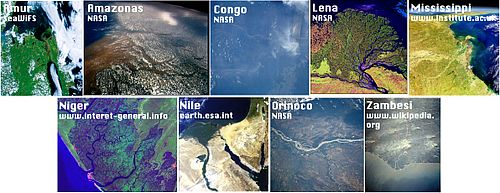Large river systems present key linkages between the atmosphere, continental climate (e.g., hydrology, erosion), and the oceans, reflecting a complex interplay that modulates coastal productivity, salinity, circulation patterns, and sedimentary depositional systems. High sediment load and riverine induced marine biological productivity generate one of the highest sediment accumulation rates in the marine realm. These marine archives provide unique possibilities to decipher past climate history on various time scales, from orbital to decadal and down to seasonal resolution.
Here at the Paleoceanography Research Unit, our concerted efforts focus on the understanding of past land-ocean linkages using marine archives from sites off large river systems whose catchment areas range from tropical rainforests to polar regions.



